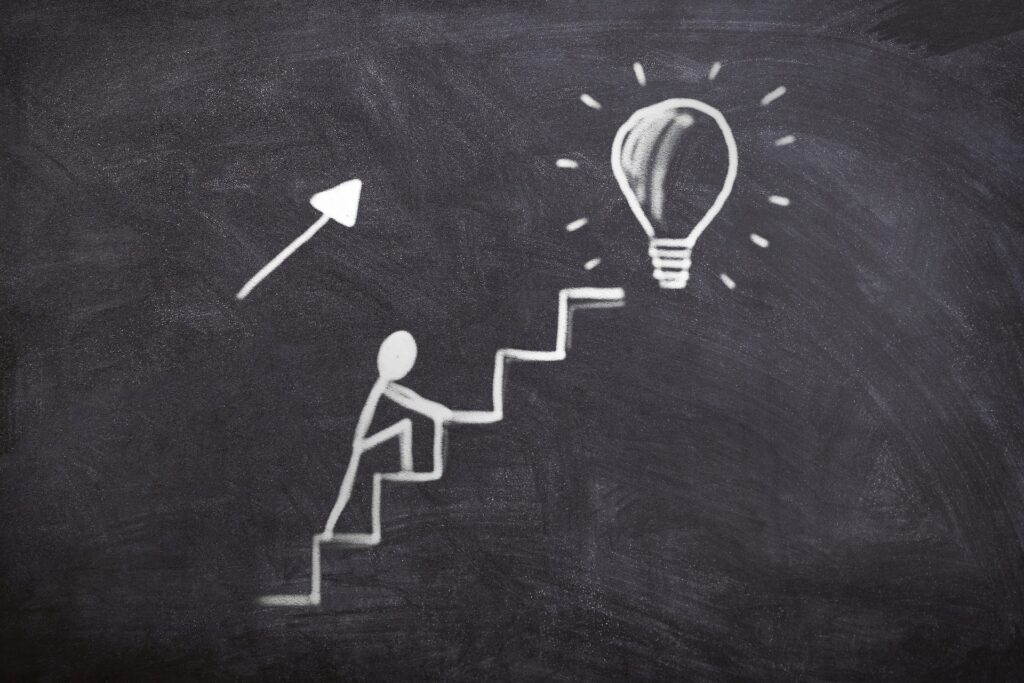Why Each Checklist MUST Include 7 Specific Items, Or Your Customers Will “NOT” Get The Desired Result… Period!
So far, you’ve learned about the different types of checklists you can create to solve people’s problems. Now, we’re going to zoom in and look at what specific elements you should include in each of your lists. If you can remember… back in lesson one, I said this…
“When we talk about “checklists,” we’re not talking about a page-long list of one-sentence points. Instead, these three-to-four-page checklists are more like mini-blueprints.”
So, let’s unpack this in greater detail and look at seven things to include in each checklist so users get the best outcome possible. Here we go…
1. Steps
If you’re sharing a “how to” process, your checklist should include steps your user can check off as they complete them. And if you’re creating a procedural checklist, then the steps can form the main framework of the checklist, and you can include the other elements listed below. For example…

Suppose your list covers the steps for creating a sales letter. They might include…
- Profile the audience so you can understand where they are and where they want to be, allowing you to create content that connects.
- List the features and benefits of the product you’re selling so your audience can know how you can help them go from “before” to “after.”
- Rank the top benefits you’ll focus on in the sales letter, so more space is given to the most important things to your audience.
- Craft an interesting, attention-grabbing headline, letting your audience know how you’ll help them solve a problem, reach a goal, or enjoy an interest.
… and so on. Your user can literally check off each step as they go along.
NOTE: Procedural checklists will be formatted specifically in this step-by-step outline. However, each of the different types can and, in most cases, should include steps to complete in some sections.
But since this is more like a mini blueprint, it doesn’t need to be a set of steps. You’ll also want to include the components listed below…
2. Tips
Your checklist should include tips to make it easier, faster, or better for your user to complete a task. Add these tips beneath each procedural step outlined in your checklist.
So, let’s stick with the example above for a sales letter checklist. One of the steps is to craft an attention-grabbing headline. You might then elaborate by including tips like…
- Put your top two or three benefits in the headline.
- Being specific is more believable than making generic claims.
- Offer hope, not hype, in your promises.
These tips can be as little as one sentence or as long as a complete paragraph. Share as much as necessary to explain the point in a way that’s understandable to your audience.
Next…
3. Examples
Another way to boost the value and utility of your checklist is to include examples throughout the steps.
Thinking back to the tip above about being specific, you can give an example like… “Discover How To Drive Your Tee Shot (not only further), but 50-75 Yards More Than You Ever Thought Possible, and Watch Your Buddies Stare in Disbelief!”
And as you’ve probably noticed… I’m constantly using examples to drum in the ideas, so you can make more sense of them.
Examples…
- Help your audience understand the point you’re making.
- Help them apply the point to their own specific situation.
- And help them brainstorm ideas they can use.
As a general rule, always strive to use appropriate examples in every piece of content you create. This would especially apply to the checklists you create and sell in your package.
4. Mistakes
One way to help your readers shortcut their success is to let them know about common mistakes people make when completing a specific process and how to avoid costly, time-consuming mistakes.

Once again, let’s return to the example of a sales letter checklist. One of the steps might be to include testimonials for the product. You can mention one of the common mistakes is to include every testimonial, even the weak ones. You’d then put people on the right track by explaining how good sales letters should only include the strongest testimonials… like those that mention specific results or by well-known personalities in the niche… while avoiding general testimonials like “You Rock!”
Remember… when it comes to your checklist, it’s not enough to tell your audience what to do… you also need to tell them what NOT to do.
TIP: Whenever you warn your readers of a mistake, always explain how to avoid it.
Next…
5. Details
The idea behind this ingredient is to provide extra explanations, information, definitions, or details about a step, tip, mistake, or other cogs in your checklist. These will be specific bits of information clarifying the points you’re making.
Let’s continue with the example above, where you’re creating a checklist for writing a sales letter. If a step is to “list the features and benefits of the product.” You can provide additional details by explaining the difference between “features” and “benefits.” Making it clear, most readers are more interested in the product’s results than the product itself.
These “details” are especially important if your audience is unfamiliar with you or your company.
6. Questions
Questions can be used to help your prospect think more deeply about an issue… ensuring they’ve covered all the bases of a specific step. Making it a more efficient, effective, and smooth process.
Once again, let’s go back to the sale letter example – here are some examples of questions that might appear…
- What are the demographics of your target audience (age, gender, income level, etc.)?
- How has your competition positioned its products?
- Have you justified the price so your audience knows its value compared to less important things they spend money on?
A variation of this idea is to include FAQs (frequently asked questions), along with short answers.
Next…
7. Ways/Ideas/Swipes
Your checklist will mention the steps your user needs to take. However…. there isn’t only one way to skin a rabbit. As such, you can provide ways, ideas, and swipes for your process. For example…
A sales letter can include steps on crafting a compelling opener, and you provide a list of ways to do this…
- Tell a story.
- Ask a question.
- Lead with a surprising fact or a popular quote.
- Expand what was claimed in the headline.
The point is… to give your readers loads of ideas for taking specific steps. And as needed, you can provide details, tips, and examples, clarifying each of the ideas listed. For example…
If you list “Ask a question” as an idea, you can then provide a set of examples for the types of questions you’ll ask in the sales letter opener.
So, there you go… 7 crucial elements. And seeing as you’re still soldiering on, here’s a bonus for taking the investment in yourself seriously…
Bonus Idea: Visuals
Not all lists will include visuals… screenshots, diagrams, charts, etc. But they’re useful tools to clarify a point or concept, making it easier for your reader to make sense of your words. For example…

Suppose your sales letter checklist is about proper ways to format it. You might show a screenshot of a well-formatted sales letter, as it clarifies what you mean by “well formatted.” Obviously, you’ll want to provide more explanations on the ingredients of a well-formatted letter, like… use of “white space,” eye-catching graphics, and black text on white background for easy readability.
Now you’ve learned the 7 Crucial Ingredients every checklist should include… now it’s your turn.
Take each of the ideas and brainstorm how you can add these elements… making your document much more valuable, interesting, and useful.
- Steps.
- Tips.
- Examples.
- Explanations.
- Ways/Ideas/Swipes.
- Questions.
- Details.
- Visuals.
